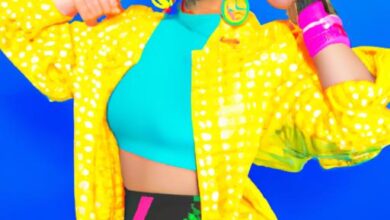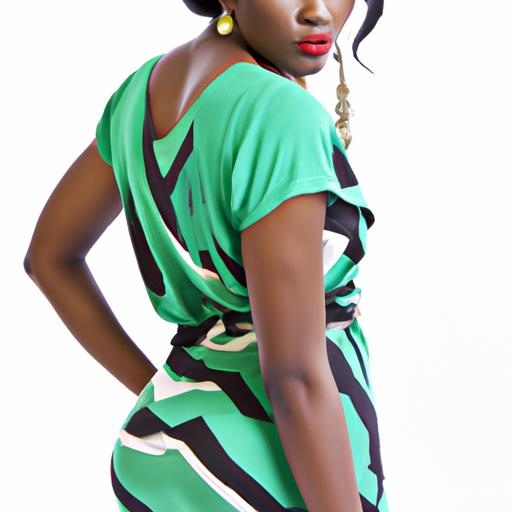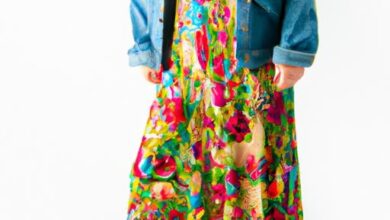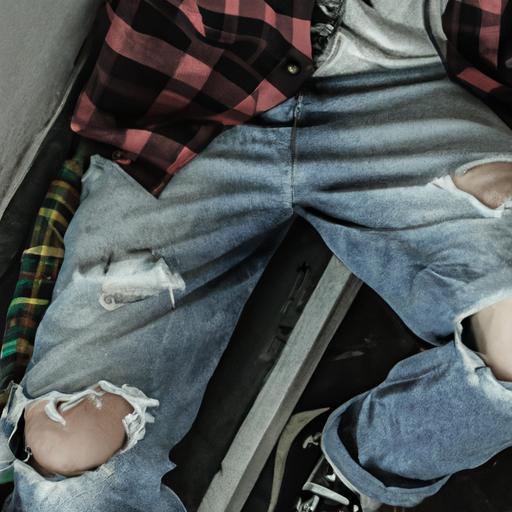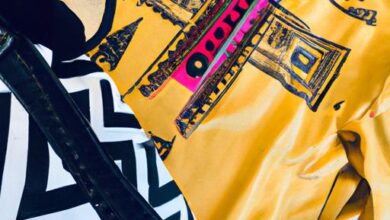Nigeria Styles of Clothes: Embracing the Cultural Tapestry
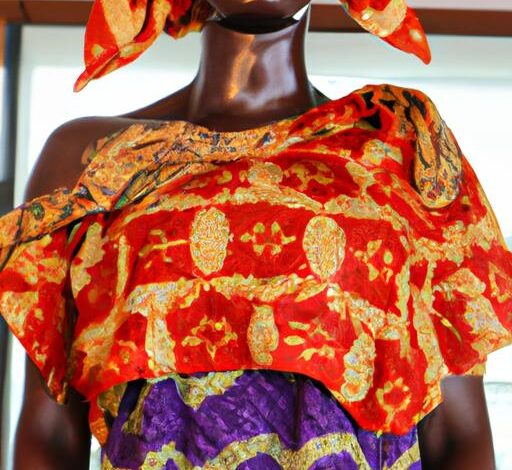
Nigeria, a land rich in diverse cultural heritage, is a treasure trove of vibrant traditions and captivating fashion styles. In this article, we embark on a journey to explore the significance of traditional Nigerian clothing styles and the importance of embracing Nigeria’s unique fashion traditions.
A Tapestry of Culture
Nigeria is a country known for its cultural diversity, with over 250 ethnic groups each boasting their own distinct traditions and customs. This cultural tapestry is beautifully woven into the fabric of Nigerian clothing styles. From the Yorubas in the west to the Hausas in the north and the Igbos in the east, each ethnic group showcases their rich heritage through their attire.
A Symbol of Identity
Traditional Nigerian clothing serves as a powerful symbol of identity, reflecting the history, values, and beliefs of the wearers. These garments speak volumes about the individual’s social status, tribe, and even marital status. It’s fascinating how a simple piece of fabric can communicate so much about a person’s background and cultural affiliations.
Exploring Nigeria’s Fashion Traditions
Understanding and embracing Nigeria’s unique fashion traditions is of utmost importance. By delving into the world of Nigerian clothing styles, we not only appreciate the beauty and craftsmanship behind these garments but also contribute to the preservation of Nigeria’s cultural heritage. It’s an opportunity to celebrate the diversity and richness that Nigeria has to offer.
As we venture further, let’s discover the popular styles of traditional Nigerian clothing, witness the evolution of Nigerian fashion in contemporary times, and explore how Nigerian clothing styles influence global fashion trends. Stay with me as we unravel the captivating world of Nigeria’s fashion traditions.
Traditional Nigerian Clothing: A Reflection of Culture and Identity
A. Expressing Cultural Heritage through Clothing
Clothing has always been a powerful medium for expressing cultural heritage, and traditional Nigerian clothing is no exception. Every stitch, pattern, and color tells a story deeply rooted in the history and traditions of Nigeria. From the intricately woven Aso Oke fabric to the vibrant Adire prints, each textile carries the essence of a particular ethnic group or region.
Nigerian clothing styles serve as a visual language, narrating tales of ancestral customs, rituals, and societal norms. The Adinkra symbols adorning the fabric of the Igbo people, for example, convey messages of wisdom, proverbs, and moral values. Such intricate details in traditional Nigerian clothing breathe life into the stories of the past, connecting generations and preserving cultural heritage.
B. The Symbolic Significance of Traditional Nigerian Clothing
Beyond being a mere fashion statement, traditional Nigerian clothing holds immense symbolic value. It serves as a powerful symbol of identity, allowing individuals to proudly showcase their ethnic affiliation and heritage. Each ethnic group in Nigeria has its unique clothing style, distinguishing them from one another and enabling them to celebrate their distinct cultural identities.
Moreover, traditional Nigerian clothing also plays a significant role in rites of passage and ceremonial events. Whether it’s a marriage ceremony, a naming ceremony, or a festival, the attire worn during these occasions reflects the cultural and traditional significance attached to them. It is a way of honoring ancestors, paying homage to traditions, and reinforcing a sense of belonging within the community.
C. Historical Influences on Nigerian Fashion Styles
The development of Nigerian fashion styles has been greatly influenced by historical events that have shaped the nation’s identity. Colonialism, for instance, introduced Western fashion elements to Nigeria, leading to the fusion of traditional and modern styles. This amalgamation created a unique blend of fashion that speaks to the resilience and adaptability of Nigerian culture.
Additionally, Nigeria’s independence in 1960 brought about a renaissance in fashion, as designers sought to redefine Nigerian identity through clothing. They incorporated elements from different ethnic groups, creating designs that celebrated the nation’s diversity. The historical context of Nigeria has undoubtedly left an indelible mark on its fashion landscape, making it a fascinating blend of tradition, innovation, and resilience.
As we delve deeper into the world of Nigerian clothing, let’s explore the popular styles and garments that define traditional Nigerian fashion.
Popular Styles of Nigerian Traditional Clothing
A Melting Pot of Styles
Nigeria’s diverse ethnic groups showcase an array of distinct clothing styles, each with its own captivating charm. Let’s take a closer look at some of the popular traditional clothing styles that embody the essence of Nigerian fashion.
A. Overview of Different Ethnic Groups and Their Distinct Clothing Styles
Nigeria’s ethnic groups, such as the Yoruba, Hausa, Igbo, and many others, each have their own unique clothing traditions. The Yorubas, for example, are known for their vibrant and intricately woven Aso-oke fabric, often used to create stunning agbada outfits. The Hausas, on the other hand, are recognized for their flowing babariga robes and the iconic flowing gowns called jalabiya. The Igbo people showcase their heritage through the elegant and versatile wrapper known as the wrapper and blouse combo.
B. Description of Popular Traditional Clothing Items
-
Agbada: This grand attire is a flowing robe worn by both men and women. It consists of a wide-sleeved gown with intricate embroidery and is often paired with matching trousers and a cap. The agbada exudes regality and is a symbol of prestige and authority.
-
Buba: The buba is a loose-fitting blouse worn by women. It is accompanied by a wrapper, a long piece of fabric wrapped around the waist. The buba and wrapper combination allows for various styles and color combinations, showcasing the creativity and individuality of the wearer.
-
Gele: Gele refers to the intricately tied headgear worn by Nigerian women. It is skillfully wrapped around the head, creating stunning shapes and designs. The gele is not only a fashion statement but also a symbol of elegance and grace.
C. Exemplification of Traditional Clothing through Vibrant Colors, Patterns, and Embellishments
Nigerian traditional clothing is known for its vibrant colors, bold patterns, and exquisite embellishments. From the striking adire fabric of the Yorubas to the vibrant kente cloth of the Igbo people, these garments reflect the vibrancy and liveliness of Nigerian culture. Intricate beadwork, embroidery, and hand-woven designs add an extra layer of beauty, making traditional Nigerian clothing a true spectacle to behold.
As we immerse ourselves in the world of Nigerian traditional clothing, we witness the diversity and artistry that epitomize the essence of Nigeria’s fashion traditions. In the next section, we will explore the evolution of Nigerian fashion, as traditional styles adapt to contemporary influences, creating a fusion that captivates the world.
Evolution of Nigerian Fashion: Contemporary Adaptations
Nigerian fashion has witnessed a remarkable evolution, embracing contemporary adaptations that blend traditional and modern elements. This fusion has resulted in a captivating tapestry of styles that seamlessly marries the rich heritage of Nigeria with the influence of globalization and Western fashion.
A. Fusion of Traditional and Modern Elements
In the ever-changing fashion landscape, Nigerian designers have found innovative ways to infuse traditional clothing styles with modern elements. This harmonious blend creates a unique aesthetic that pays homage to the past while embracing the present. From incorporating modern fabrics and silhouettes into traditional garments to reimagining traditional embroidery techniques with a contemporary twist, Nigerian fashion designers are constantly pushing boundaries and redefining the concept of traditional attire.
B. Globalization and Western Influence
The impact of globalization and Western influence on Nigerian clothing styles cannot be overlooked. With increased connectivity and cultural exchange, Nigerians have been exposed to global fashion trends, and this has influenced their sartorial choices. Western clothing styles, such as jeans, t-shirts, and suits, have seamlessly integrated into Nigerian wardrobes, creating a fusion of traditional and Western fashion elements.
C. Blending Tradition and Modernity: Contemporary Nigerian Designers
Contemporary Nigerian designers play a pivotal role in bridging the gap between tradition and modernity. They are at the forefront of reinventing traditional Nigerian clothing styles, infusing them with fresh perspectives and modern aesthetics. Designers like Lisa Folawiyo, Deola Sagoe, and Mai Atafo are celebrated for their ability to blend traditional fabrics, patterns, and techniques with contemporary designs, captivating both local and international audiences.
Through their creativity and craftsmanship, these designers showcase the versatility and timelessness of Nigerian fashion, making it accessible and appealing to a global audience. Their work not only celebrates Nigeria’s rich cultural heritage but also elevates it to the global fashion stage, positioning Nigerian fashion as a source of inspiration for designers worldwide.
As we dive deeper into the world of Nigerian clothing styles, we’ll explore the growing influence of Nigerian fashion on the international stage and the impact of Nigerian celebrities and influencers in promoting these styles. Join me in the next section as we uncover the global appeal of Nigeria’s fashion traditions.
Nigerian Clothing Styles: Influencing Global Fashion Trends
Nigeria’s vibrant and dynamic fashion scene has caught the attention of the global stage, captivating fashion enthusiasts worldwide. Let’s delve into how Nigerian clothing styles are making a significant impact on global fashion trends.
A Growing Popularity on the International Stage
Nigerian fashion has garnered immense popularity and recognition on the international stage. Designers from Nigeria are showcasing their talent and creativity at renowned fashion events, leaving a lasting impression with their unique and captivating designs. The world is embracing the boldness, colors, and intricate patterns that Nigerian fashion brings to the table.
Celebrities and Influencers Leading the Way
Nigerian celebrities and influencers have played a pivotal role in promoting Nigerian clothing styles. Their influence and reach have propelled Nigerian fashion to new heights, captivating audiences across the globe. From red carpet events to social media platforms, these fashion-forward individuals proudly embrace their Nigerian heritage, showcasing the beauty of Nigerian clothing styles to the world.
Inspiring Global Designers
Nigerian fashion has become a wellspring of inspiration for designers worldwide. The fusion of traditional Nigerian elements with modern aesthetics has sparked a new wave of creativity in the fashion industry. Designers from different corners of the globe are incorporating Nigerian influences into their collections, paying homage to the rich cultural heritage of Nigeria. The unique fabrics, bold prints, and intricate details of Nigerian clothing styles have become a global phenomenon.
As Nigerian fashion continues to gain recognition and influence on the global stage, it serves as a testament to the creativity and ingenuity of Nigerian designers. The world is captivated by the beauty and uniqueness that Nigerian clothing styles bring to the fashion industry, paving the way for a more diverse and inclusive fashion landscape.
Conclusion
In conclusion, Nigeria’s diverse cultural heritage is beautifully reflected in its traditional clothing styles. From the intricate designs and vibrant colors to the symbolic meanings behind each garment, Nigerian fashion tells a captivating story of identity and tradition.
By exploring Nigeria’s unique fashion traditions, we not only gain a deeper appreciation for the craftsmanship and artistry involved but also contribute to the preservation of Nigeria’s cultural heritage. It is through embracing and celebrating these traditions that we ensure their longevity for generations to come.
Nigerian clothing styles have not only captivated the hearts of its own people but have also made a significant impact on the global fashion scene. With the rise of Nigerian designers and the influence of Nigerian celebrities and influencers, the world is taking notice of the beauty and creativity that emanates from Nigeria.
As we continue to embrace Nigeria’s fashion traditions, let us also lend our support to Nigerian designers, promoting their work on an international platform. By doing so, we not only uplift the Nigerian fashion industry but also showcase the richness and diversity of Nigerian culture to the world.
So, whether you’re donning an elegant agbada, a colorful buba, or an intricately tied gele, remember that you are not only wearing a piece of clothing but also carrying a piece of Nigeria’s vibrant cultural heritage.
Join me in celebrating Nigeria’s unique styles of clothes and let us keep the flame of tradition burning bright.
Conclusion: So above is the Nigeria Styles of Clothes: Embracing the Cultural Tapestry article. Hopefully with this article you can help you in life, always follow and read our good articles on the website: business.musictoob.com
